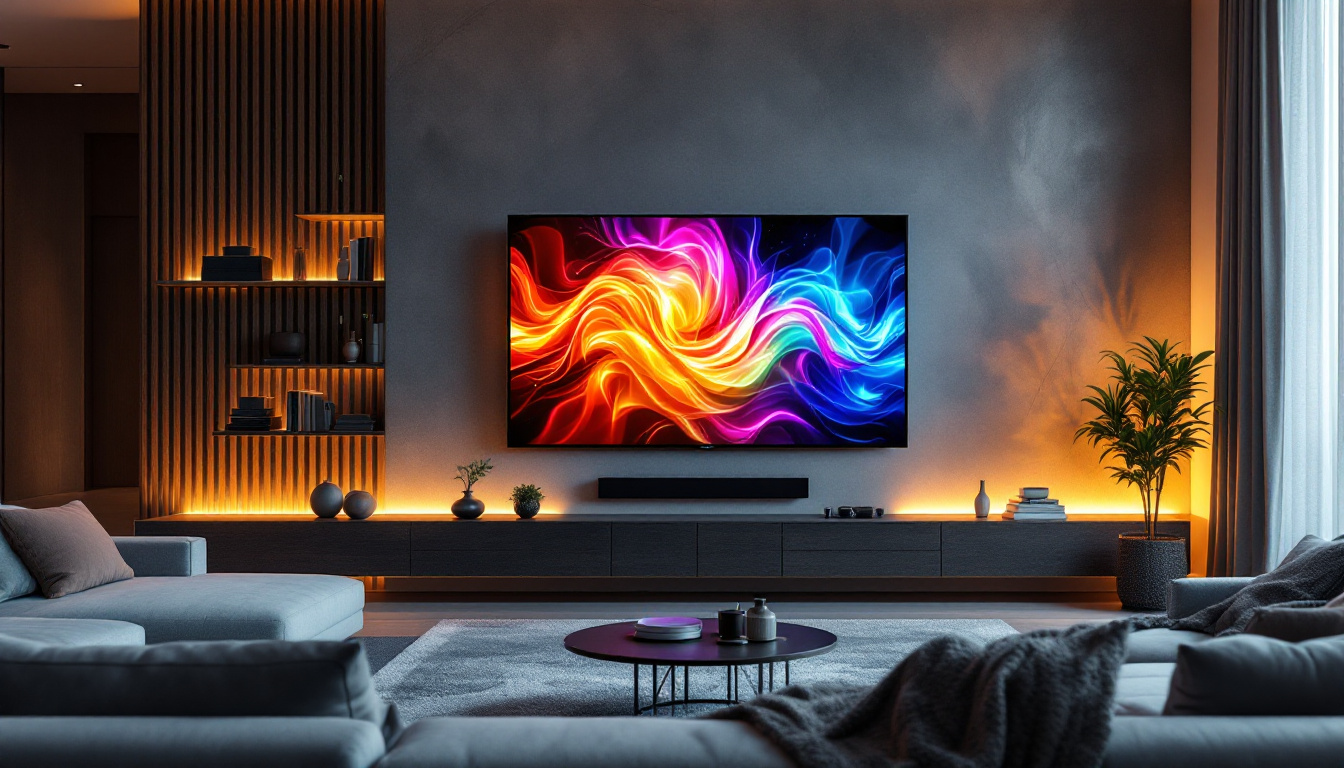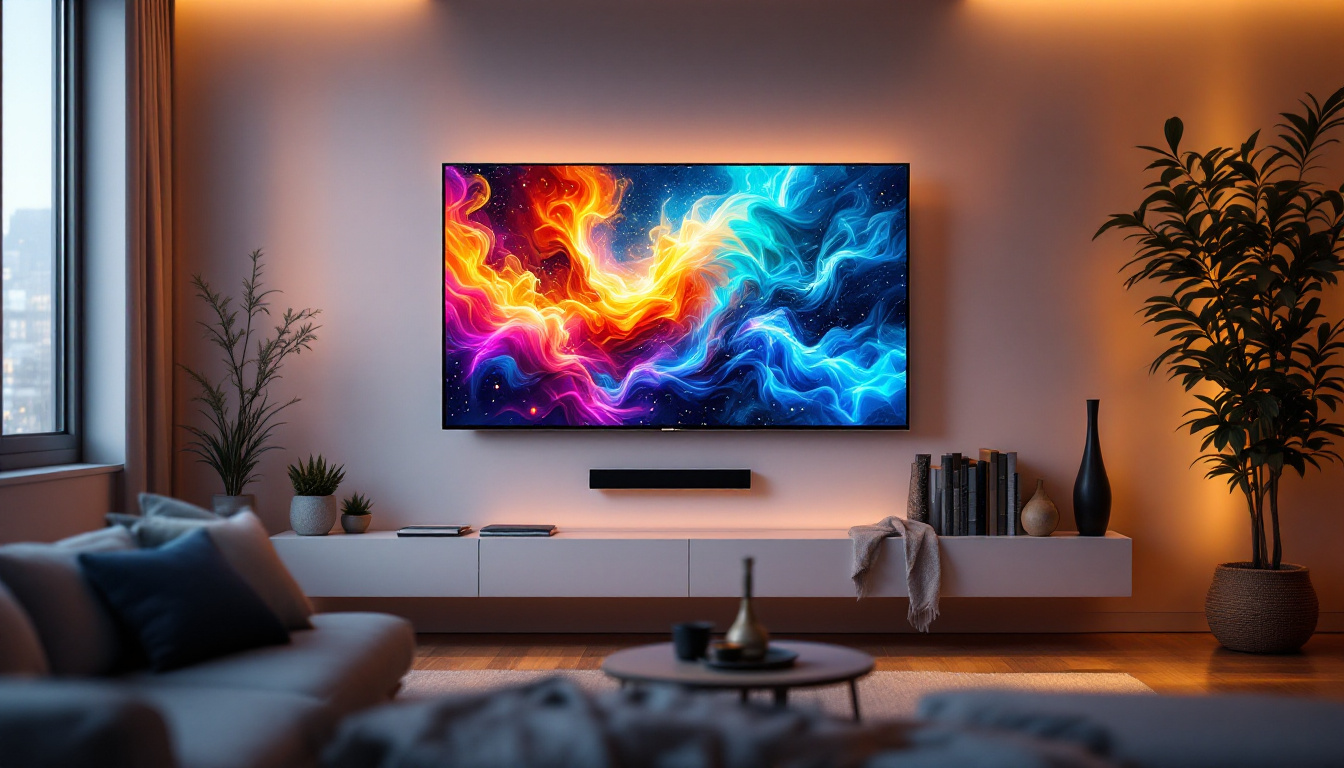Plasma TV: LED Display Explained
The evolution of television technology has brought about a variety of display types, each with its unique advantages and disadvantages. Among these, Plasma TVs and LED displays stand out as two popular choices that have shaped the viewing experience for millions. This article delves into the intricacies of Plasma TVs and LED displays, exploring their technologies, benefits, and limitations.
Understanding Plasma TV Technology
Plasma TVs utilize a unique technology that involves the use of small cells filled with noble gases. When electricity is applied, these gases become ionized and produce ultraviolet light, which then excites phosphors to create visible images. This process allows for vibrant colors and deep blacks, making Plasma TVs a favorite among enthusiasts for watching movies and sports. The technology behind Plasma screens was developed in the 1960s, but it wasn’t until the late 1990s that it became commercially viable, leading to a surge in popularity throughout the 2000s. As the technology matured, manufacturers were able to create larger screens with improved resolution, making Plasma TVs a staple in home theaters.
How Plasma Displays Work
The core of a Plasma display consists of thousands of tiny cells, each functioning as an individual pixel. These cells are sandwiched between two panels of glass, and when activated, they emit light. The phosphors inside the cells glow in red, green, and blue, combining to create a full spectrum of colors. This technology enables Plasma TVs to deliver exceptional color accuracy and contrast ratios, often outperforming their LED counterparts in these areas. The precise control over each pixel allows for stunning detail in images, especially in high-definition content, where every nuance can be appreciated. Furthermore, the rapid response time of Plasma displays ensures that fast-moving images are rendered smoothly, contributing to an immersive viewing experience.
One of the standout features of Plasma technology is its ability to produce deeper blacks. This is particularly advantageous in dark scenes, where the contrast between light and dark can significantly enhance the viewing experience. Unlike LED displays, which may struggle with backlight bleed, Plasma TVs can turn off individual pixels completely, achieving true black levels. This capability not only enriches the visual quality but also enhances the depth of the image, making it feel more three-dimensional. As a result, viewers often find themselves drawn deeper into the story, whether it’s a thrilling action sequence or a subtle dramatic moment.
Advantages of Plasma TVs
There are several advantages to choosing a Plasma TV over other display types. Firstly, the color reproduction is often more accurate, which is vital for those who appreciate cinematic experiences. Additionally, Plasma TVs have a wider viewing angle, meaning that colors and brightness remain consistent even when viewed from the side. This characteristic is particularly beneficial in social settings where multiple viewers may be seated at different angles, ensuring that everyone enjoys the same high-quality image without any degradation in color or brightness. The technology also allows for a more natural representation of skin tones, making it a preferred choice for filmmakers and content creators aiming for authenticity in their productions.
Another significant benefit is the motion handling capabilities of Plasma displays. They excel in fast-paced scenes, reducing motion blur and providing a smoother viewing experience. This makes them particularly suited for sports and action movies, where clarity is crucial. The combination of rapid pixel response and high refresh rates means that even the fastest movements—like a soccer ball flying across the screen or a car racing by—are rendered with remarkable precision. This attention to detail not only enhances the enjoyment of dynamic content but also allows viewers to appreciate the artistry involved in filmmaking and sports broadcasting.
Limitations of Plasma TVs
Despite their many advantages, Plasma TVs do have some limitations. One of the most notable is their susceptibility to burn-in, where static images can leave a permanent mark on the screen if displayed for extended periods. This can be a concern for gamers or those who frequently watch channels with logos or static content. Manufacturers have implemented various technologies to mitigate this issue, such as pixel shifting and screen savers, but users must still be mindful of their viewing habits to avoid potential damage.
Moreover, Plasma TVs tend to consume more power than LED displays, which can lead to higher electricity bills over time. They are also generally heavier and bulkier, making them less convenient for wall mounting or moving around. Additionally, as the market has shifted towards more energy-efficient technologies, the availability of new Plasma models has diminished, leading to a decline in their popularity. This shift has prompted many consumers to consider alternative display technologies, such as OLED and LED, which offer their own unique advantages while addressing some of the limitations associated with Plasma technology.
LED Display Technology Explained
LED (Light Emitting Diode) displays have become the dominant technology in recent years due to their energy efficiency and slim design. Unlike Plasma TVs, LED displays use a backlighting system to illuminate the screen. This technology can be further divided into two main categories: Edge-lit and Full-array LED displays.
How LED Displays Work
In an LED display, the screen is made up of liquid crystal display (LCD) panels that require a light source to produce images. Edge-lit LED displays use LEDs placed along the edges of the screen to illuminate the pixels, while Full-array displays have a grid of LEDs behind the screen, allowing for more precise control over brightness and contrast.
LED technology has evolved significantly, with advancements such as local dimming and quantum dot technology enhancing performance. Local dimming allows specific areas of the screen to be dimmed or brightened independently, improving contrast ratios and black levels. Quantum dots, on the other hand, enhance color accuracy and brightness, making LED displays more competitive with Plasma technology.
Advantages of LED Displays
One of the primary advantages of LED displays is their energy efficiency. They consume significantly less power than Plasma TVs, making them a more environmentally friendly option. Additionally, LED displays are typically thinner and lighter, allowing for easier installation and a more modern aesthetic in home entertainment setups.
LED displays also have a longer lifespan compared to Plasma TVs, often lasting over a decade with regular use. This longevity, combined with lower maintenance costs, makes them an appealing choice for consumers looking for durability and reliability.
Limitations of LED Displays
While LED displays have many strengths, they are not without their drawbacks. One of the most significant limitations is their performance in dark scenes. Due to the backlighting technology, LED displays can struggle to achieve the same level of deep blacks that Plasma TVs offer. This can result in a less immersive viewing experience, particularly in dimly lit environments.
Additionally, LED displays may exhibit issues such as clouding or backlight bleed, where light leaks around the edges of the screen. This can be particularly noticeable in dark scenes and can detract from the overall quality of the image.
Comparing Plasma and LED Displays
When choosing between Plasma and LED displays, several factors come into play. Each technology has its own set of strengths and weaknesses, which can influence the decision based on individual preferences and viewing habits.
Picture Quality
Picture quality is often the most critical factor for consumers. Plasma TVs excel in color accuracy, deep blacks, and motion handling, making them ideal for movie and sports enthusiasts. In contrast, LED displays offer bright images and improved energy efficiency, making them suitable for well-lit rooms.
Ultimately, the choice between the two may come down to personal preference. For those who prioritize cinematic quality and can manage the risks of burn-in, Plasma may be the better option. However, for consumers looking for versatility and energy savings, LED displays often emerge as the more practical choice.
Viewing Environment
The environment in which the TV will be used can significantly impact the decision. Plasma TVs perform best in dimly lit settings, where their superior contrast ratios can shine. On the other hand, LED displays are better suited for bright rooms, where their higher brightness levels can combat ambient light.
For individuals who watch television in various lighting conditions, an LED display may provide more flexibility and adaptability, ensuring a good viewing experience regardless of the time of day.
Cost Considerations
Cost is another important factor when comparing Plasma and LED displays. Generally, LED displays tend to be more affordable, especially in larger sizes. Plasma TVs, while often offering superior picture quality, can come with a higher price tag, particularly for larger models.
Additionally, the long-term cost of ownership should be considered. LED displays, with their lower power consumption and longer lifespan, may result in savings over time, making them a more economical choice in the long run.
The Future of Display Technology
As technology continues to advance, the landscape of display technology is evolving rapidly. While Plasma TVs have largely fallen out of favor due to their limitations and the rise of LED technology, innovations such as OLED (Organic Light Emitting Diode) and MicroLED are emerging as potential successors.
OLED Technology
OLED technology offers many of the benefits associated with Plasma displays, including exceptional color accuracy and deep blacks. Unlike both Plasma and LED displays, OLED panels emit light on a pixel-by-pixel basis, allowing for true black levels and superior contrast. This technology has gained popularity among high-end television models and is often regarded as the gold standard in display quality.
However, OLED displays are not without their challenges. Burn-in remains a concern, similar to Plasma technology, and they can be more expensive than traditional LED displays. Nevertheless, the advancements in OLED technology continue to push the boundaries of what is possible in home entertainment.
MicroLED Technology
MicroLED is another emerging technology that promises to combine the best features of both LED and OLED displays. MicroLED panels consist of tiny self-emissive LEDs that can create stunning images with high brightness, excellent color accuracy, and true blacks without the risk of burn-in.
This technology is still in its infancy and tends to be costly, but as manufacturing processes improve, MicroLED could become a viable alternative for consumers seeking the highest quality in display technology.
Conclusion
In the battle of Plasma vs. LED displays, both technologies have their merits and drawbacks. Plasma TVs offer unparalleled picture quality, particularly in dark environments, while LED displays provide versatility, energy efficiency, and a modern aesthetic. The choice ultimately depends on individual preferences, viewing habits, and environmental considerations.
As technology continues to advance, consumers can look forward to exciting developments in display technology, including OLED and MicroLED. These innovations promise to enhance the viewing experience, making it an exciting time for home entertainment enthusiasts.
Whether one chooses Plasma, LED, or the latest advancements, the goal remains the same: to enjoy a captivating and immersive viewing experience that brings stories to life.
Discover the Future of Visual Experience with LumenMatrix
As you consider the vast landscape of display technologies, LumenMatrix stands at the forefront, ready to illuminate your world with unparalleled LED solutions. Embrace the future of home entertainment and professional visual communication with our extensive range of LED display modules. From the comfort of your living room to the vibrancy of outdoor advertising, our Indoor and Outdoor LED Wall Displays, Vehicle LED Displays, and more are designed to captivate and engage. Experience the innovative brilliance of LumenMatrix and elevate your viewing experience. Check out LumenMatrix LED Display Solutions today and step into a world where every pixel tells a story.































